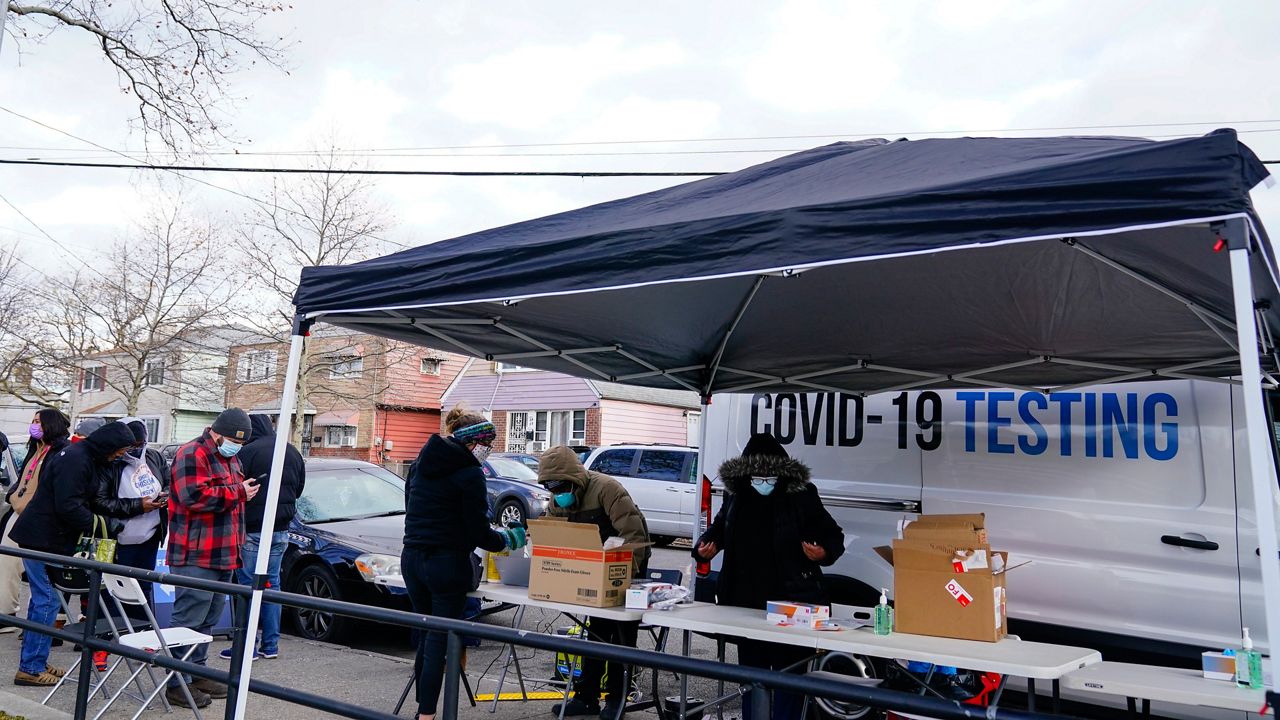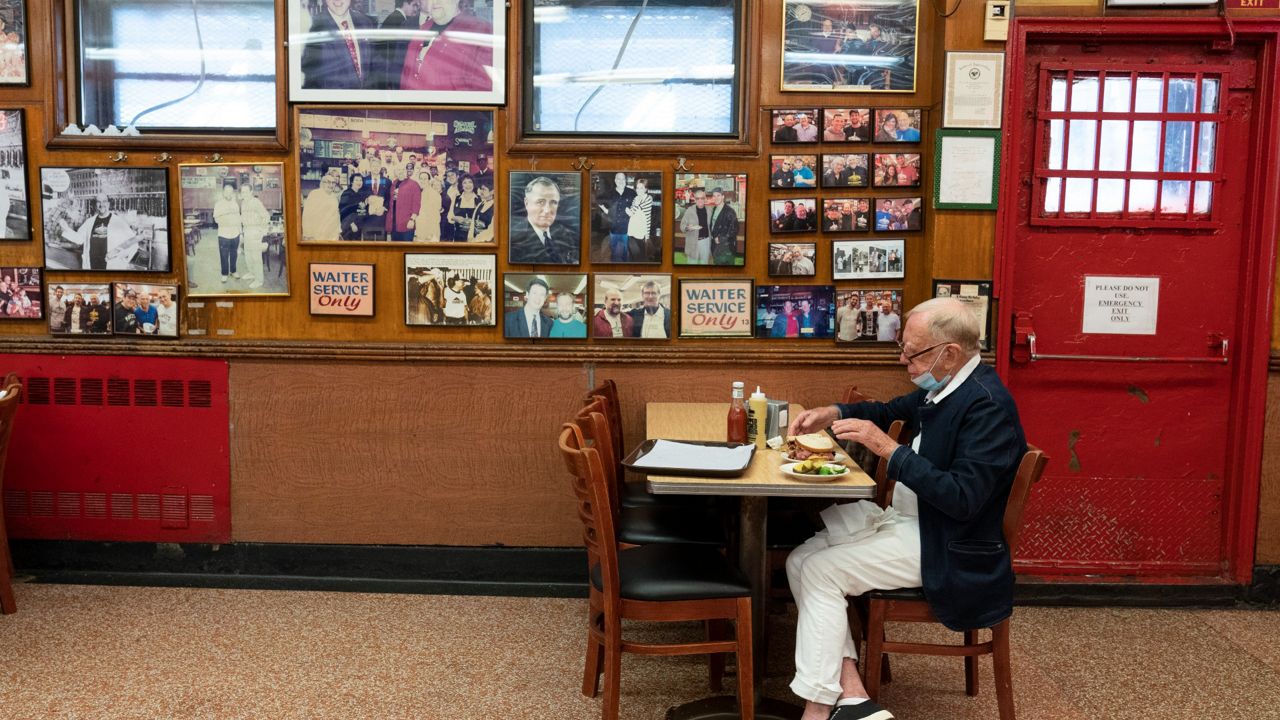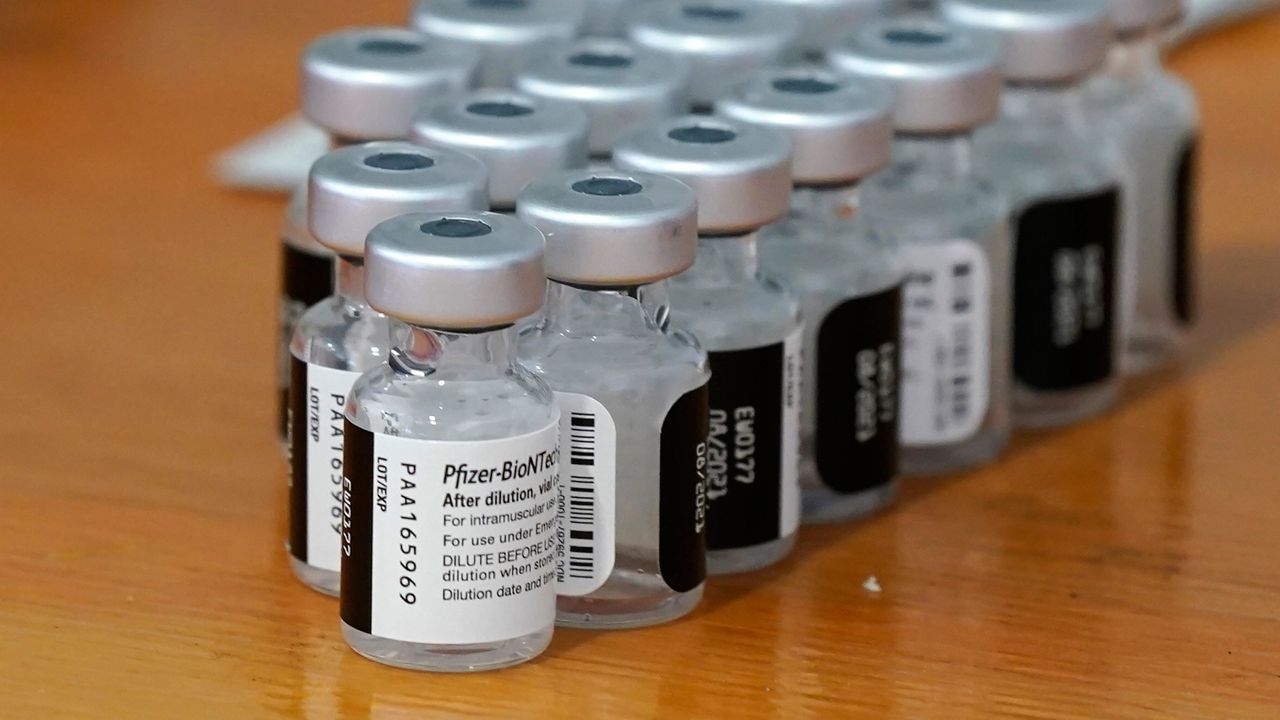NEW YORK — Amid fears of a second wave of the coronavirus in New York, the state’s daily positivity rate has reached 3% for the first time since late May.
The last time the state’s daily positivity rate was 3% was May 26. On that day, the seven-day average of positive COVID-19 cases was 3.5%, and the 14-day average was 4.4%.
It’s unclear if the threshold means a reintroduction of lockdowns statewide is imminent. On Monday, Mayor Bill de Blasio said the state should consider taking a look at indoor dining, which resumed not even two months ago, now that the positivity rate is above 2%. Lockdowns were recently reimposed in parts of Brooklyn and Queens after infection rates spiked in some neighborhoods. Some of those hot spots have since seen restriction eased.
While there have been COVID-19 hot spots in parts of the city and state in the fall, there is one potential ray of hope to prevent shutdowns: the state’s seven-day average of positive COVID-19 cases is a bit a better, at 2.2%, and the 14-day average is 1.9%.
But the numbers are steadily on the rise in New York, although at higher rates upstate. Both Western and Central New York have also seen COVID-19-positive cases of 5.7%, based on tests conducted in the last 24 hours, according to state officials. Cuomo continued to point to New York's relatively low infection rate compared to most other states in the country, and noted the Empire State’s positivity rate remains the third-lowest in the nation; only Maine and Vermont boast lower rates.
Meanwhile, the city’s daily positivity rate is 2.9%, and the seven-day positivity rate is 2.3%, much higher than it’s been for months, according to the mayor.
The city is monitoring an uptick in cases on Staten Island. In the South Shore neighborhood of Tottenville, the daily positivity rate was 5.74% on Tuesday, actually down from the 6.5% mark the day before.
You can see positivity levels by zip code by visiting nyc.gov/health/coronavirus
The city, aiming to rectify the tide, has set up a weeklong effort to increase awareness of COVID-19 and testing opportunities. Bright and early Tuesday at the St. George Ferry Terminal, city workers were out handing out masks to travelers.
But some Staten Islanders didn’t share health officials’ fears over the rise in positivity rates in the borough and across the state.
“It doesn’t concern me. I mean, I've been out and about this whole time, and thank God, I’m good, but I only wear it out of respect,” said one commuter, referring to her mask.
Another man tells NY1 he listens to health officials for guidance but hopes the increase won’t lead to another massive shutdown.
“There is no decision by my own hand. That’s why I have to take care of myself,” he said. “I don’t have the decision in my hand.”
Of even greater concern than positivity rates: 1,548 people were hospitalized in New York state due to COVID-19 on Monday, compared to 1,400 on Sunday. Hospitalizations in the state in the last week have increased by 321 patients. As recently as September 5, the number of COVID-19 hospitalizations in the state was 410. The high total was 18,825 on April 12.
The current numbers are stark increases from the summer, when the state and city’s daily, seven-day, and 14-day positivity rates were at 1% or lower, and hospitalizations and deaths were far less frequent.
De Blasio in recent days has warned the city is seeing real growth in coronavirus infections and that it is dangerously close to a second wave.
"Right now, our health care system is doing very well, but if we saw that number go up above the threshold, that would be basically a doubling of where we are now,” the mayor said Tuesday. “That's a tremendous concern. Case numbers are already too high.”
De Blasio warned that if the numbers pass 5%, the city could see “serious restrictions,” but even 3% on the seven-day rolling average would lead to all schools having to go remote for “a period of time.”
“I think these indicators actually tell you very, very clearly when we're getting to that point that you would define as the second wave having fully arrived,” de Blasio said.
By comparison, Cuomo was projecting more optimism Monday, saying Brooklyn has seen improvements and that the borough's hot spot restrictions will be eased. “Red zones” in Brooklyn will now be eliminated and fall under “orange zone” guidelines.
“Brooklyn has made great progress,” Cuomo said Monday. “Do more testing, more targeting as soon as you see any increase, be more aggressive. There’s nothing more you can do. But that’s everything you can do. Watch a small increase, attack a small increase. And it works. How do you know it works? Because the numbers show it works.”
This change allows restaurants in Brooklyn to reopen for outdoor dining; under “red zone” rules, restaurants were only permitted to serve takeout and delivery. Gyms, fitness centers, and hair salons will remain closed. Nonessential gatherings will be limited to a maximum of 10 people. Houses of worship in these areas will now be able to increase capacity from 25% to 33%.
"We reduced the 'red zone' by 50% last week," said Cuomo about Brooklyn's “micro-clusters.” "Brooklyn, if you remember there was quite a fuss when we made it a ‘red zone’; people don't like the restrictions, I understand that, but it works."
De Blasio has particularly focused on the next two holiday months as a crucial time to curb this potential second wave. The mayor is urging people not to travel out of state for the holidays. People who do travel into New York City will need to quarantine for 14 days. He said the city will be “very strict about that."
However, according to state rules, if you test negative for the coronavirus three days before your trip, you will be able to avoid the 14-day quarantine rule.
The increases in cases in New York come as the United States deals with a third wave of the virus as colder temperatures bring more people indoors. The United States surpassed 10 million coronavirus cases on Monday, according to data from Johns Hopkins University. The U.S. has recorded more than 100,000 new cases in each of the past five days, including a new record of 128,412 on Saturday. Cases are climbing in practically every state, and deaths and hospitalizations are on the rise, too.
------
Did you know you can now watch, read and stay informed with NY1 wherever and whenever you want? Get the new Spectrum News app here.
------
This story includes additional reporting from Angi Gonzalez.
-----
Further Coronavirus Coverage
What to Do If You Test Positive for COVID-19
Who Will Get a Coronavirus Vaccine First — And Who Decides?
How Hospitals Protect Against the Spread of Coronavirus
Coronavirus Likely Spreads Without Symptoms
Coronavirus: The Fight to Breathe
Experts Say Masks Are Still a Must
The Race for a Coronavirus Vaccine
The U.S. May Face a Second Wave of Coronavirus Infections
Cuomo Granted Broad New Powers as New York Tackles Coronavirus








